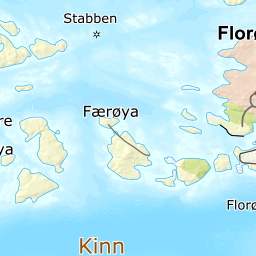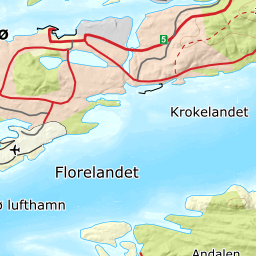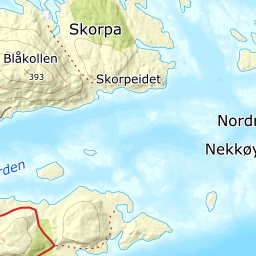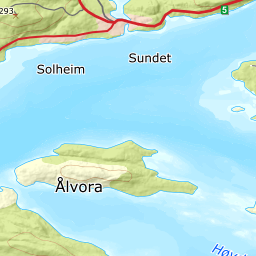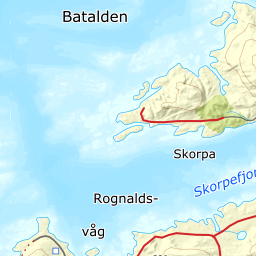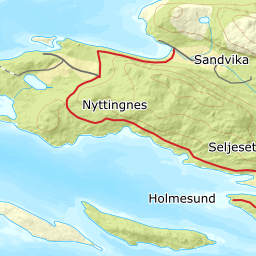Minnetavler i BDS-bygget på Bradbenken
Det heng fem minnetavler i trappeoppgangen mellom 4. og 5. etasje i BDS sin tidlegare bygning på Bradbenken. Adressa er Bradbenken 1, og J. Ludwig Mowinckels rederi eig huset.
IN MEMORIAM (til minne) står med store bokstavar på veggen over tavlene. Den første tavla omfattar omkomne i første verdskrigen, dei fire andre tavlene dei som omkom i andre verdskrigen.
Namna står oppførde under kvart einskilt skip og under ei krigshending (eksplosjonsulukka på hamn i Bergen 1944). Skipa og eksplosjonsulukka står oppførde i kronologisk rekkefylgje.
Fødd i Gulen
Ein av dei omkomne i første verdskrigen var 2. styrmann Carl B. Lyngnæs frå Florø. Han omkom då D/S "Pollux" vart torpedert av ein tysk ubåt i Nordsjøen, 18. mars 1917.
Carl Lyngnæs er same mannen som i bygdeboka for Gulen står nemnt som Lars Lyngnes, fødd i Gulen, 19.11.1887. Han var son til Berge Larsson Bjordal, fødd 1846, og Marta Eiriksdotter, fødd 1853 i Kyrkjebø. Dei budde på småbruket Lyngnes under garden Rise. I bygdeboka står at Lars Lyngnes "døydde 19.(sic.) mars 1917 som styrmann på "Polluks" (sic.) som vart torpedert av tyskarane."
Fire andre frå Sogn og Fjordane
Gunnar Knudsen i Vestfold har laga ei liste over omkomne på norske skip i krigsforlis under første verdskrigen. På denne lista har me funne fire andre frå Sogn og Fjordane:
E.O. Andreassen, fødd 24.12. 1892, Hyllestad, maskinist, M/S "Goodwin", kom bort 1915.
Alfred Kristoffersen Aartebrøt (sic), fødd 01.05.1891, Kinn, 2. styrmann, D/S "Mauranger", kom bort 1916.
Thrond A. Tellefsen, fødd 18.11.1880, Sogn og Fjordane, skipsførar, D/S "Graziella", kom bort 1916.
Samson Mathias A. Sandvik, fødd 05.02.1883, Kinn, båtsmann, D/S "Suldal", kom bort 1915.
D/S Pollux
D/S "Pollux" - den andre "Pollux" i BDS - var eit lasteskip på 1196 brutto registertonn med plass for passasjerar. Skipet vart levert frå Fevigs Jernskibsbyggeri, Fevik, i 1907 og blei sett inn i Nordsjø-fart. "Pollux" var på veg frå Newcastle til Noreg då båten vart torpedert av ein uidentifisert ubåt om morgonen, den 18. mars 1917. Båten gjekk ned i løpet av 10 minutt.
Forliset
Hundreårs-skriftet til BDS som kom ut i 1951, omtalar torpederinga av D/S "Pollux". Her er heile omtalen attgjeven, omskriven til nynorsk:
Den 17. mars 1917 gjekk D/S "Pollux" frå Newcastle lasta med sulfat og stykkgods for Bergen. Mannskapet utgjorde 20 mann, og kl. 7 om kvelden kom 20 passasjerar om bord. E.A. Sivertsen var kaptein og Jakob Vallestad førstestyrmann. Neste morgon blei kursen sett mot øya Farne. Seinare endra kapteinen kursen noko. Der var frisk kuling av vest med svær sjø og haglbyer. Kl. 6.30 om morgonen kom det brått ein voldsam eksplosjon i akterrommet. Akterluka sprang i lufta og to båtar blei smadra.
Kapteinen let straks maskina stoppa og gav ordre om å ta på livbelte, til å ta seg fram til dei tre gjenverande livbåtane og til å få desse sett ut. Men sjøen gjekk høg, og det var yttarst vanskeleg å få båtane på havet. Kapteinen og styrmannen blei tilbake på skipet for å hjelpa til med låringa frå dekket. Då dei såg at ikkje alle som var ombord var komne i båtane, prøvde dei å finne dei, men utan hell. Dei hoppa til sist overbord i siste augeblink. Til alt hell lukkast det å få dei berga opp i kvar sin båt, styrmannen etter 20 minutt, kapteinen etter tre kvarter. No dukka med eitt ein ubåt fram or mørkret og kom sakte bortover mot båtane.
Ein offiser ropte til styrmannen på gebrokkent engelsk. Styrmannen bad om at båtane måtte bli slept mot land. Offiseren avslo dette. Nordmennene heldt då opp ein liten gut på tre år framfor offiseren og gjentok bøna om å bli slept mot land. På ny blei dette avslege. Båtane måtte så freista å nå kysten ved roing.
Kapteinen sin båt, som hadde den vesle guten om bord, trefte til all lukke ein damptrålar som tok folka inn til Aberdeen. Førstestyrmannen sin båt kom inn til Peterhead om føremiddagen den 20. mars. Her var alle ennå i live, men det stod ille til med fleire. Verre gjekk det med den tredje båten. Fem passasjerar og fem av mannskapet var om bord i den. Under roturen inn mot land døydde tre av passasjerane og tre av mannskapet av frost og utmatting. Då båten 22. mars - etter fire døgn på sjøen - søkte land ved Dustandborough Castle sør for Berwick, kantra den og slo ein av mannskapet i hel. To messejenter, fem passasjerar og to av mannskapet var gått ned med skipet. Alt i alt omkom såleis åtte passasjerar og åtte av mannskapet.




